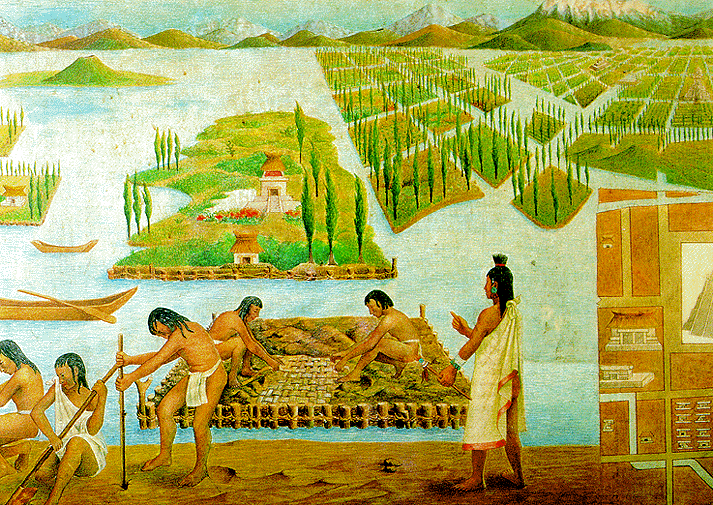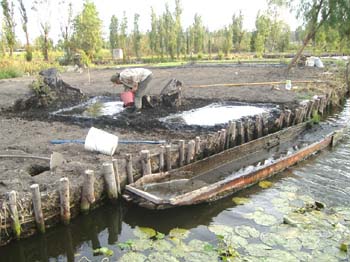History
Aquaponics adaptability to regional ecological constrains has made it resilient. Historical evidence traces the joint use of hydroponics and aquaculture as far back as 2000 B.C. While the most famous of historical uses has been among the Aztecs, Egyptians, and Chinese, many cultures including the Japanese, Peruvians, and Greeks relied on aquaponics. Emerging research even suggests that the hanging gardens of Babylon were aquaponically sustained. Historically aquaponics provided agricultural solutions for urban centers under harsh population pressures. A brief timeline is provided below to establish chronology:
2000 BC
Chinese developed aquaculture paired with agriculture as a husbandry method. The common carp was the predominate species used.
500 BC-500 AD
500 BC is the approximate date of the appearance of the monograph “The Classic of Fish Culture”. Published in China by Fan Lai, this was the first written record of aquaponic practice and methodology. Subsequently the practice spread through out East Asia and even the Indian sub-continent.
906 AD
The suitability of other carp species discovered: silver carp, big-head carp, grass carp, mud carp. Additionally, it was also found that when raised in polyculture-- in the same pond, these species complement each other by eating different types of food and staying in different environmental strata within the pond; therefore maximizing the productivity of freshwater pond culture.
1120 AD-1911 AD
The Chinese continue to develop and refine aquaponics: fry collection, transport and dispersal, pond structure, rearing densities, disease control, etc.
- (1400 AD) Aquaponics using brackish water was first practices in Indonesia, from here it spread to the Philippines, Malaysia, Thailand, and Taiwan.
-During this period evidence shows the presence of aquaculture in various countries: Middle East (carp and tilapia), Japan and Korea (finfish, crustaceans, mollusks, marine invertebrates).
Modern Day- Latin America, Australia, New Zealand (trout and cold water species), and the Pacific Islands (seafarming) are now developing aquaponic practices.
Chronology clearly illustrates that China was at the forefront of aquaponic practice and development, however the use of aquaponics by the Aztecs deserve mention. The Aztecs practiced aquaponics as far back as 1150 AD. Known as chinampas, their method consisted of creating artificial islands from grasses and reeds that typically measured 30 × 2.5 meters. They were created by staking out the shallow lake bed and then fencing in the island rectangle with wattle-and-daub. The fenced-off area was then layered with mud, dredged lake sediment, decaying vegetation and household refuse until it measured 1 meter above the level of the lake. Sometimes trees were planted at the corners to secure the chinampa. As the plants on the rafts grew, their roots would dangle in the water. Then fertilization would take place within the lake ecosystem, thus supporting vegetation, algae, fish and waterfowl. Chinampas were separated by a system of channels, creating canoe access. These "islands" produced up to seven crops a year. Within the Aztec empire, chinampas were used at the following sites near closed water bodies:Xochimilco, Chalco Tenochtitlán, Xaltocan, Lake Texcoco. However, in modern times the only chinampa that remains in use is Lake Xochimilco. Common chinampa crops include maize, beans, squash, amaranth, tomatoes, chili peppers, and flowers. It is estimated that food provided by chinampas made up one-half to two-thirds of the food consumed by the city of Tenochtitlán.
|



